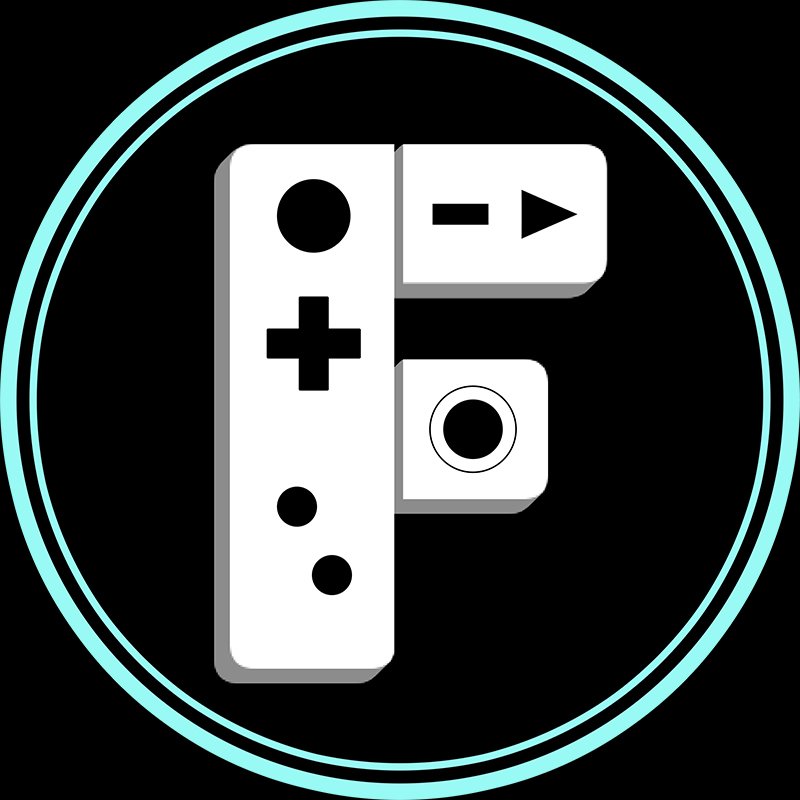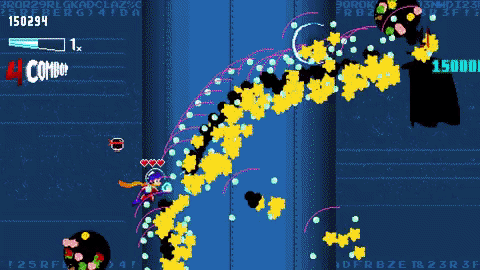Sky Racket (Steam) Review
PERFECT FOR ARCADE ENTHUSIASTS
Falling mostly into the cute-em-up genre of games, Sky Racket comes from the small indie development group Double Dash Studios. While the game certainly takes most inspiration from the various horizontal shooters like Parodius, there’s also an element of Pong or Breakout that helps make this title charmingly unique. What starts as a delightful quirky adventure ends in mind-melting visuals and tough-as-nails challenges. In short, I was surprised by how much I liked Sky Racket and it’s the type of game that I would love to see as a physical arcade machine. This definitely stands as one of the best cute-em-up games I’ve played with enough challenge for hardcore players but it’s certainly not perfect as there are a couple of instances that I found to be stretched out too long into the realm of irritation. Overall though, Sky Racket is a good time and a perfect title to recommend to those seeking something new and fresh but familiar enough to not be hard to understand.
Fair warning, Sky Racket contains some really harsh flashing visuals in the last act so those that are sensitive to those types of images should probably not play Sky Racket, especially for long sessions.
Sky Racket in many ways is a sensory overload but not in the sense that it overwhelms, at least not immediately. The game starts mild, easing the player into the video game tennis mechanics, getting them used to whacking back energy balls and manipulating their character. It takes some getting used to, but there is a good level of control in how the ball is returned. By my second playthrough, I was accurately knocking balls behind enemy structures and watching its destructive bounce in absolute glee. This glee can be shared with a friend as there is co-op but I stuck with single-player this time around. That said, I hope to introduce this to some friends through the Steam Remote Play Together feature and it would definitely be a game easily shared on the Switch.
Aside from knocking back balls, the other main mechanic is this roll that can be held to reduce one’s size and move quicker. This is most comparable to the shrinking mechanic in the shmup sections of Cuphead, but in Sky Racket one cannot attack while rolling. Knowing exactly how to weave between shots can be the deciding factor between failure and victory.
Another mechanic featured in Sky Racket is these little animal buddies that act as special moves. Their attacks are on a cooldown so using them is encouraged. These range from large lasers to a triple shot and more. The buddies also provide an extra hit which is needed as the game does get pretty tough and players can select their power-up by whacking the bubble they are delivered in. Funnily enough, I didn’t use the animal buddy attacks for 90% of my first playthrough. In fact, I had to start a new game just to remember that there was another button function and I confusedly asked around in the game’s Discord server. A huge thanks goes out to Mike on the dev team for being so patient with me. Me missing this feature is mostly because I’ve had Sky Racket for quite some time, maybe even before its October launch, and I’m just now getting around to it. I wish I would’ve dove into this hybrid shmup sooner because I found it (mostly) delightful.
Minibosses are usually sprinkled throughout each level, which can be super tough in some spots.
One of the reasons I feel so strongly about Sky Racket is the stunning visual effects and how that pairs with an absolutely magical soundtrack. Visually, it reminds me a lot of the modern style of the most popular Cartoon Network shows. Fans of Steven Universe or Adventure Time will probably connect to these characters and their playful designs. In a way, it’s a mix of a childlike interpretation of space, mixed with some Japanese culture. At one point players will be taking down a huge fox monster and another be shaking off clingy tanooki. The soundtrack brings all of this together, wrapping the gameplay in crisp melodies and constant rhythm.
Speaking of the fox monster, boss battles are mostly fantastic. I thoroughly enjoyed trying to figure out the best ways to deal damage to them and dodging their screen-filling attacks. These monsters are well animated, light-hearted, but also rather tough to take down. Most of the bosses took me about five attempts or so to get it right but now I can cruise through most of them without taking much damage at all. Repeat playthroughs are encouraged and it’s fun to chase higher and higher scores. I don’t see myself understanding the combo system and how that ties into scores but it is there for those that enjoy picking apart and mastering those systems.
Getting to those bosses can be tough as there are some levels that are stretched out a bit longer than I would have liked. Plus, there are no mid-level continues. Getting through a twenty-minute stage only to be slapped by a miniboss never feels good. Luckily, through some perseverance and by only playing Sky Racket in short bursts I never found myself overly frustrated with it.
I wonder how much potassium is in Platanorr. . .
Where things get funky and genuinely annoying is the retro-infused boss Tennistar, a play on Sinistar, and the boss even makes similar garbled threats. This fight is just a straight-up game of Pong but the player has fewer hits compared to the boss. The issue here is that Tennistar makes few mistakes, making it one of the longest and most agonizing fights in the game with no checkpoints. Initially, I laughed aloud at this retro callback but that laughter quickly morphed into a groan as I realized that this fight was an exercise in patience that ultimately led to frustration.
Tennistar’s world is also where I became increasingly aware of the game’s flashing graphics that are definitely a danger to those who suffer from photosensitive epilepsy. I don’t think I’ve ever been affected by a game’s visuals, aside from a couple of PSVR games, but the assault on the eyes here in Sky Racket definitely had me looking away. Beyond the uncomfortable nature of these images, there are some wildly wacky things that happen towards the end of the game that is worth seeing. Getting to the end does tease a final section for each level has various challenges and finishing all of them unlocks presumably a final boss fight. I was only able to achieve about half of these so far and I don’t see myself getting them anytime soon because these are extremely tough.
Facing off against Tennistar is only cute for a few moments.
A mode I did enjoy testing myself with was the Arcade Mode that is unlocked after a successful first playthrough. This is basically a classic approach to a shoot-em-up where the levels bleed into one another and there’s a set amount of lives. The map that flashes between areas even looks like what was used in the iconically hard-to-beat Ghosts and Goblins. I’ve only gotten to the third boss in an arcade run but it is an awesome way to play.
I also want to point out that there is an Assist Mode (not sure exactly what that changes honestly) and a God Mode that I used to get past the boring Tennistar and the final battle. You can also use these assists to grind out the challenges, which is a nice touch. For true accessibility, I would like to see some options that reduce the harshness of the visuals, and maybe that’s something that could be added in a future update or sequel.
While bopping balls behind enemy blocks is the main theme of the game, there is enough variety and twists to keep players interested throughout the whole game.
While bopping balls behind enemy blocks is the main theme of the game, there is enough variety and twists to keep players interested throughout the whole game.
In fact, I would love to see this idea expanded further in a sequel. That or I would want to see Double Dash Studios make a more traditional shoot-em-up. It seems like these developers really understand what makes an arcade-style game special and the techniques used in Sky Racket elevate those ideas in a way that’s fun. This game would fit right into a modern arcade and I would be surprised if a couple of machines don’t already exist.
Sky Racket is a bit of a hidden gem. There’s not a whole lot of information about it on YouTube that I found super compelling and I’ve not once seen anyone recommend it. If you can get past the tougher segments of the games, the longer levels, and a couple of drawn-out boss fights this is one that just has to be experienced.
In conclusion, Sky Racket is a wild, playful, delightful tour of a weird, imaginative galaxy that is certainly worth visiting.
SCORES
GAMEPLAY - 7/10
VISUALS - 8/10
SOUND - 9/10
CONTROLS - 9/10
REPLAY VALUE - 7/10
OVERALL - 8/10
For more information about Sky Racket and the Double Dash Studios team, check out their official website. Two digital Steam copies were provided for review. Screenshots were captured through Steam. For more retro-inspired whimsy check out my review of Sydney Hunter and the Curse of the Mayan or Zach’s review of the world’s first cute-souls game Skellboy.









On a path that will ultimately result in his own destruction, James Savage takes on his vampiric ex-girlfriend Draculae in El Paso Elsewhere, a moody neo-noir action shooter from Strange Scaffold.